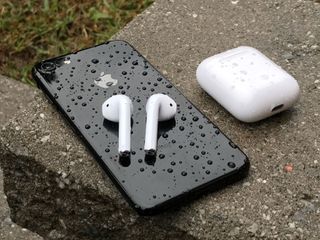Beats Studio3 vs. Solo3: Differences Between these Wireless Headphones

Apple's Beats headphones are a popular, increasingly solid choice for folks looking for good sound and good looks in their music-listening hardware. While less fashion-forward headphones may provide better overall sound, Beats continues to close the gap on that consideration. If you've been eyeballing a pair of wireless Beats headphones but aren't sure which to choose, you've come to the right place. Here's how the Beats Studio3 and Beats Solo3 headphones compare!
Colors
Yes, I'm starting with the fashion. Both the Beats Studio3 and Solo3 headphones come in a wide range of colors. Here's how they break down:
- Beats Studio3
- Shadow Gray
- Matte Black
- Blue
- Porcelain Rose
- White
- Red
- Beats Solo3
- Matte Black
- Matte Silver
- Gloss White
- Gold
- Red
- Matte Gold
- Gloss Black
- Rose Gold
- Silver
W1 Chip
Both the Studio3 and Solo3 headphones include Apple's W1 chip. This wireless chip is the same one that's found in Apple's AirPods — it improves upon the battery life, connection, and pairing process.
Because of the W1 chip, you can expect quite a bit of battery life out of both these headphones. Both can provide up to 40 hours of playback* thanks to the low-power W1 chip. And, just like AirPods, pairing is a simple process wherein you bring your headphones close to your Apple device, tap to pair, and, well, there's no step three. Once you've paired, you'll also be able to switch audio listening between all your iCloud-registered devices.
Both headphones also offer a feature called Fast Fuel that gives you a sizable amount of playback after a short charge:
- Beats Studio3: 10 minutes of charging gives you three hours of playback.
- Beats Solo3: Five minutes of charging gives you three hours of playback.
*With active noise cancelation enabled, you can expect up to 22 hours of battery life while using the Beats Studio3 headphones.
Master your iPhone in minutes
iMore offers spot-on advice and guidance from our team of experts, with decades of Apple device experience to lean on. Learn more with iMore!
You can read more about Apple's W1 chip here:
Why your next pair of headphones should include Apple's W1 chip
Active Noise Cancelation
Here's where the headphones differ. The Studio3 headphones tout active noise cancelation technology, while the Solo3 headphones do not. Apple's "Pure ANC" technology takes into account a number of conditions to provide active noise cancelation:
[It] evaluates fit and adjusts for leakage caused by hair, glasses, the shape of your ear, and movement of your head as you go about the day. Additionally, Pure ANC simultaneously checks what you're hearing while noise canceling is applied against the original music content to adjust and ensure optimal audio fidelity.
This means you're going to get a more true-to-sound listening experience regardless of your environment. It also means you're going to have less battery life than you will with the Solo3 headphones. With Pure ANC enabled, you'll get up to 22 hours of battery life.
Price
As you might imagine, active noise cancelation is going to make the Beats Studio3 wireless headphones a bit more pricey than their non-noise canceling counterpart. Here's the pricing breakdown:
- Beats Studio3 Wireless: $350
- Beats Solo3 Wireless: $300
Questions?
Thinking about buying a pair of Beats headphones? Do you have any questions that weren't answered in the piece? Leave a comment or send me a Tweet!

○ Everything you need to know about AirPods
○ AirPods, Beats X, or PowerBeats 3?
○ Best way to buy AirPods
○ How to personalize AirPods
○ How to pair AirPods with W1
○ How to pair AirPods with Bluetooth
○ How to configure AirPods
○ How to use AirPods
○ How to use AirPods offline
○ How to clean AirPods
○ How to find lost AirPods
Mikah Sargent is Senior Editor at Mobile Nations. When he's not bothering his chihuahuas, Mikah spends entirely too much time and money on HomeKit products. You can follow him on Twitter at @mikahsargent if you're so inclined.
